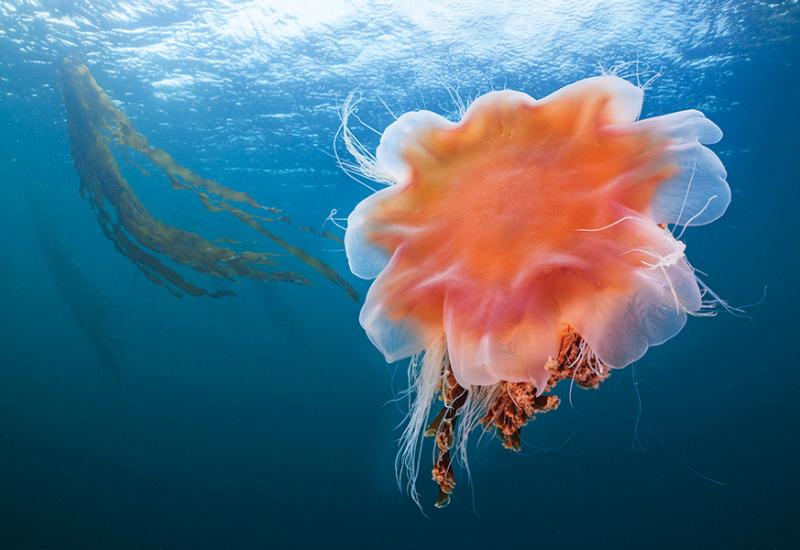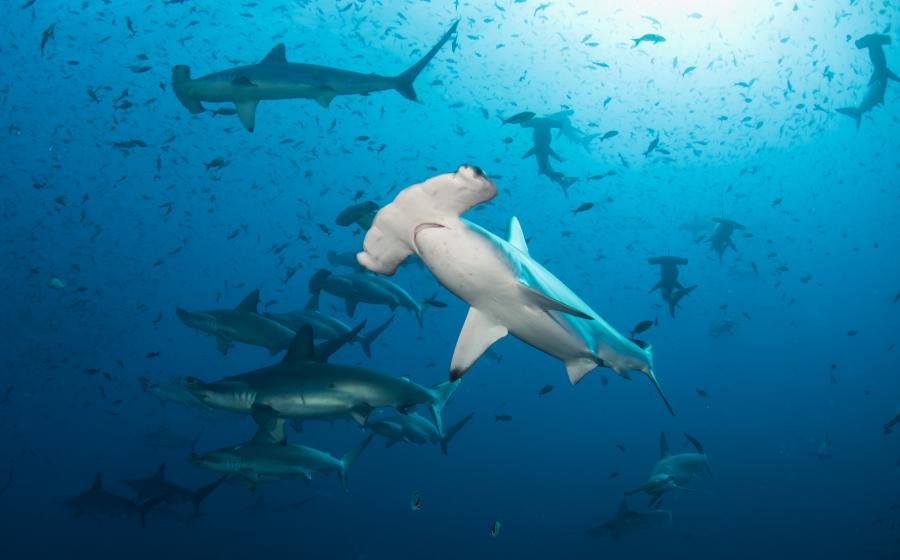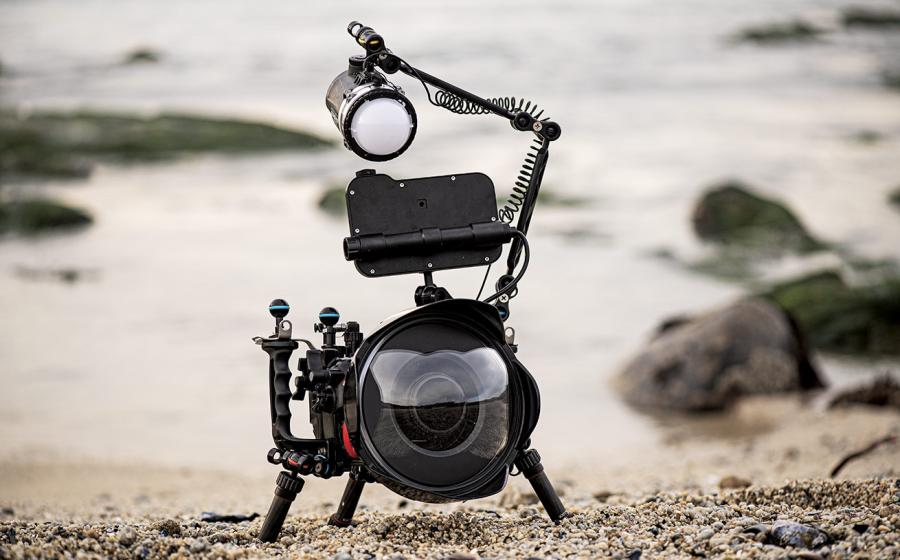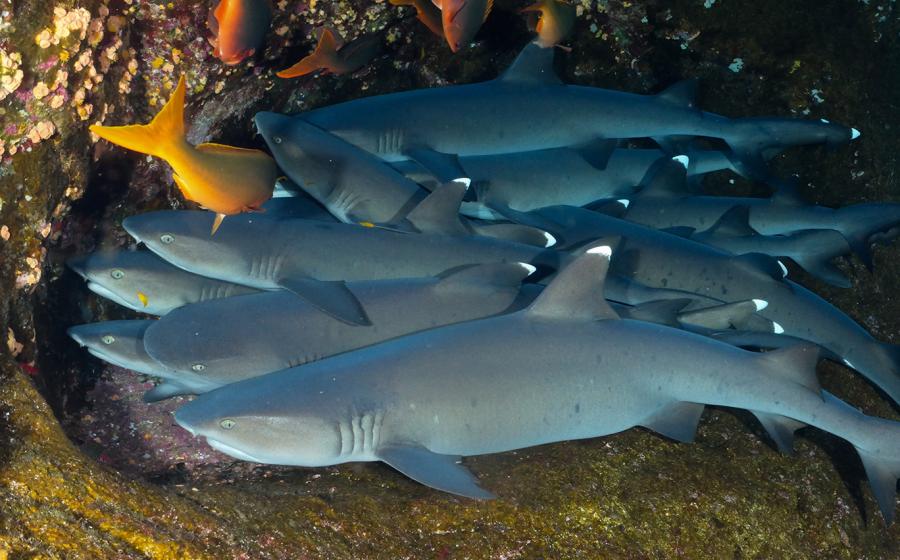The Tempting Allure of Wreck Diving
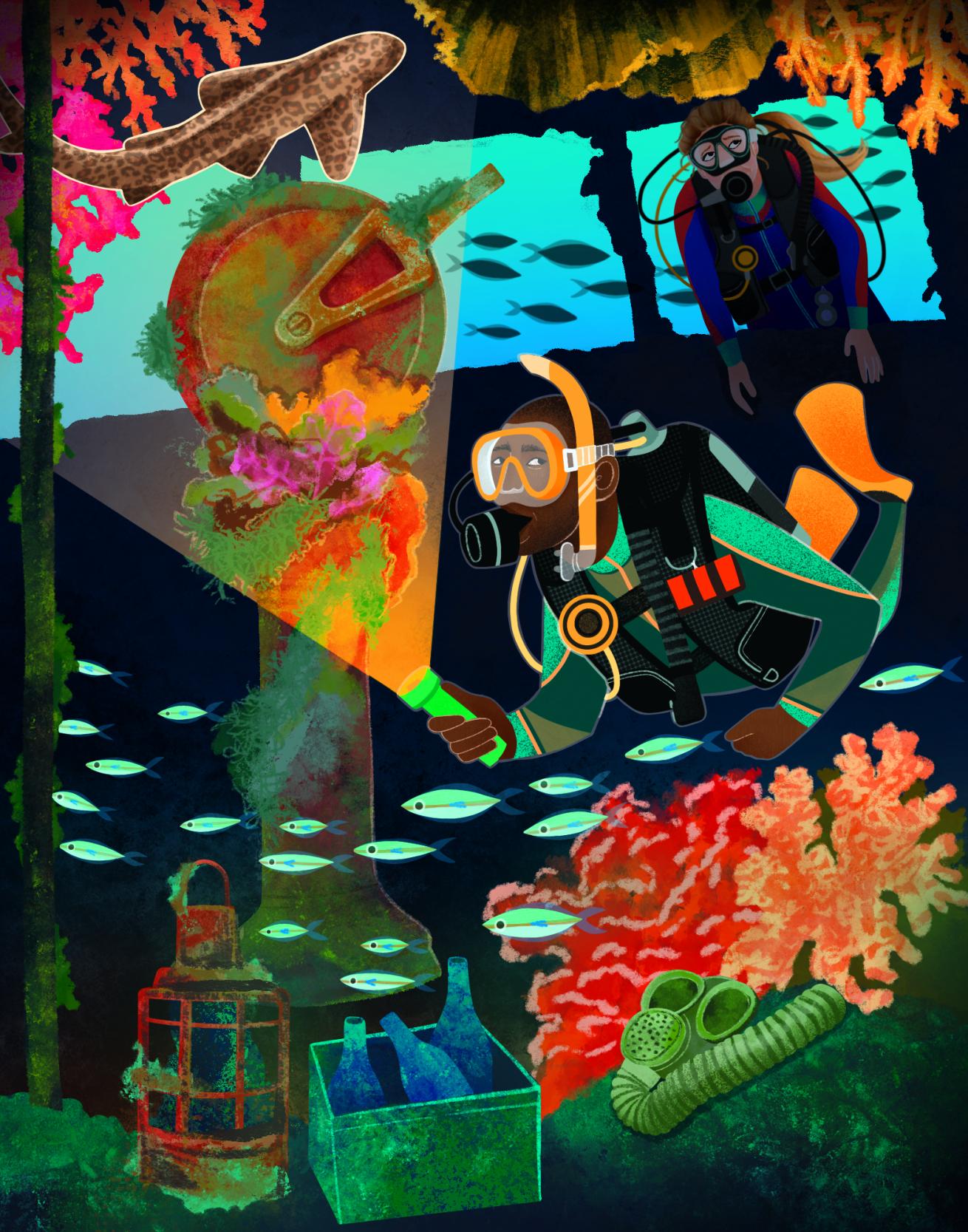
Illustration: Lauren RebbeckThe deck of the Shinkoku Maru was a cacophony of colorful soft corals and anemones, and large schools of bar jacks flashed in the blue.
"I will not swim inside the wreck.” I repeat the words in my head like the Little Engine That Could (Not) while gearing up for my first dive in Chuuk Lagoon aboard Truk Odyssey. After all, I was not yet trained as a wreck diver. And just as importantly, to my mother at least—she’s ever the worrier—I’d promised her I’d enjoy the views from outside all that rusting metal, the result of the U.S. Navy’s Operation Hailstorm air and surface attack during World War II.
I fully intended to keep my word for both her and me. But I’d be lying if I said I wasn’t asking myself what I was doing here in one of the world’s best places for wreck diving without the training to penetrate for a closer look.
It was my early days with the sport, only 50 dives logged. Not once had I ventured inside a shipwreck, so when I agreed to admire the dark recesses of Micronesian war graves for which Chuuk Lagoon is known from the outside, I didn’t know what I’d be missing.
As my Chuukese dive guide briefed me to go down on the wreck of the 437-foot-long Fujikawa Maru, a Japanese cargo ship felled by U.S. torpedoes in 1944, he mentioned he’d been diving these waters since he was a kid, racking up more than 10,000 dives. He assured me I would have a grand time finning around the decks and hulls. Still, I was wondering what I’d be missing.
As we descended to the wreck, which sits upright in 110 feet of water, I could see the remains of Japanese fighter planes in the shadowy maw of the cargo hold below. Shafts of light from above streaming through the beams of the hold like something sent from heaven seemed to freeze the history we were surrounded by in place. It felt like hallowed ground.
The deck of the Shinkoku Maru was a cacophony of colorful soft corals and anemones, and large schools of bar jacks flashed in the blue. I followed my guide along easy swim-throughs where light flooded the ship’s interior, gaining confidence in this setting that was new to me.
Realted Reading: What It's Like to Dive the USS Oriskany
When we surfaced from the trip’s last dive, on the 439-foot-long Yamagiri Maru, where 12 crew members perished during Operation Hailstone, it was with reverence that I listened to the stories from other divers in our group who had the training to venture inside the wreck’s dark chambers.
I had hovered above the ship per usual, taking in the sun-splashed and fishy views and watching their bubbles percolate up from the wreck like the life force around all those lost souls. For a moment, it seemed they were among us too.
Later, my mom blew up one of the underwater photos I’d sent her of me, surrounded by fish and orange and pink corals on the deck of the Shinkoku Maru. I see it in the living room every time I visit. It’s a reminder that I still need to get trained in the practice of penetrating wrecks. But Mom doesn’t need to know that.
5 Wrecks Perfect for First-Timers
Flagler’s Barge, Marathon, Florida Keys
The coral and fish-covered beams of this wreck in just 25 feet of water make it a rite-of-passage site for new divers in the Florida Keys. Used to transport materials to build the Old Seven Mile Bridge back in 1900, the barge’s sunlit surroundings and colorful life make it a photographer’s dream.
USAT Liberty, Tulamben, Bali
One of Indonesia’s most legendary shore dives, the wreck of the USAT Liberty was torpedoed by a Japanese sub before being deserted on a beach on Bali’s northeast coast in 1942. Lava flows from an eruption from Mount Agung in 1963 pushed the 393-foot-long wreck to its present watery position, a short swim offshore. New divers can kick out from the beach to explore the stern in just 15 feet of water.
USS Kittiwake, Grand Cayman
The Cayman Islands’ signature wreck is this WWII submarine rescue ship that was purposely sunk offshore from Seven Mile Beach in 2011 as an artificial reef. The top of the Kittiwake can be explored in just 15 feet of water, with holes cut into the hull for easy swim-throughs.
Jake Seaplane, Palau
Not all underwater wrecks are ships. Divers in Palau marvel at the consistently great visibility and sheer sight of this Japanese Navy seaplane underwater. It crashed after takeoff during WWII and rests on a coral head in about 45 feet of water.
Astron, Punta Cana, Dominican Republic
In 50 feet of water and just a ten-minute boat ride offshore from the Punta Cana resort area of Bavaro, this 300-foot-long Russian delivery ship sank in 1978 on its way to Cuba; it has a bridge and giant propeller that are still easily identifiable. Be on the lookout for green sea turtles that sometimes swim past.



